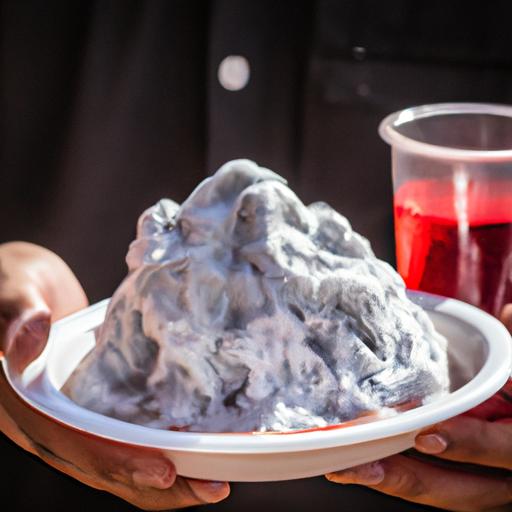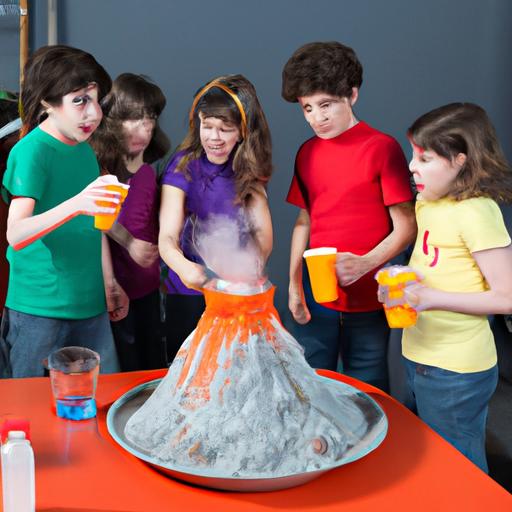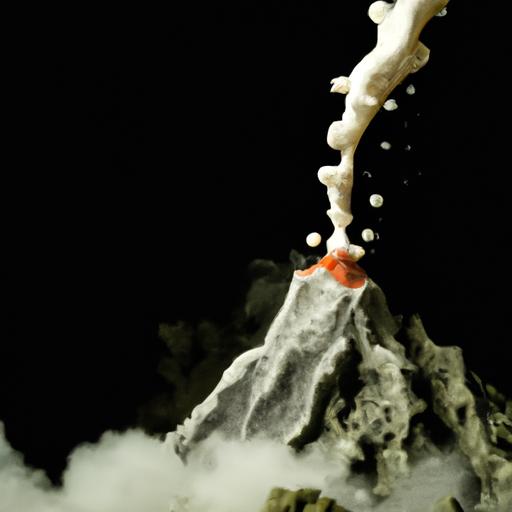Are you looking for a thrilling and interactive science experiment that will leave you in awe? Look no further than the classic baking soda volcano experiment! This exciting experiment has been a staple in science classrooms and homes for decades, captivating both children and adults alike.
But, before you begin, it’s essential to have a reliable and safe baking soda volcano recipe. With the right ingredients and equipment, you can create a stunning eruption that will amaze your friends and family. So, let’s dive into the importance of a trustworthy recipe and how to create your very own baking soda volcano.
Ingredients and Equipment

Necessary Ingredients
To create a successful baking soda volcano eruption, you’ll need the following ingredients:
- Baking soda: This is the main ingredient that reacts with vinegar to create the eruption.
- Vinegar: The acidic nature of vinegar reacts with baking soda to produce carbon dioxide gas, which creates the eruption.
- Dish soap: Adding a small amount of dish soap will create a foam-like eruption.
- Food coloring: This is optional but can add a fun pop of color to the eruption.
- Water: This will dilute the vinegar and create a more controlled and gradual reaction.
Importance of Each Ingredient
Each ingredient plays an important role in the baking soda volcano experiment. Baking soda and vinegar are the key components that create the chemical reaction that causes the eruption. Dish soap is added to create a more substantial and foam-like reaction. Food coloring is optional but can add a colorful and visually appealing aspect to the experiment. Water is added to dilute the vinegar and create a safer and more controlled reaction.
Recommended Equipment
To conduct the baking soda volcano experiment, you’ll need the following equipment:
- A container to hold the volcano structure: This can be made of clay, paper-mache, or any other material that can hold the mixture.
- A mixing bowl: This is necessary to mix the ingredients.
- Measuring spoons: These are needed to measure the ingredients accurately.
- Funnel: This is optional but can make pouring the mixture into the volcano structure easier.
- Safety goggles: These are crucial to protect your eyes from any potential splashes.
- Protective surface: To prevent any damage to your surfaces, place a protective layer underneath the volcano structure.
Preparing the Volcano

Step-by-step guide on how to build a volcano structure
To create a successful baking soda volcano experiment, you first need to construct a sturdy volcano structure. Here’s a step-by-step guide on how to build your very own volcano:
Step 1: Gather Your Materials
First, gather all the necessary materials, including cardboard, paper mache, or clay. You can also use a pre-made volcano structure if you prefer. Additionally, ensure that you have enough space to build your volcano and conduct the experiment safely.
Step 2: Form the Base
Next, create the base of your volcano by cutting out a cardboard circle and attaching it to a larger piece of cardboard. Then, form the shape of the volcano by adding paper mache or clay around the base and building it up gradually.
Step 3: Add Details
Once you have formed the basic shape of the volcano, add details such as rocks, crevices, and craters to create a realistic-looking volcano. You can use paint or markers to add color and texture to the structure.
Tips on creating a realistic-looking volcano
To make your baking soda volcano experiment even more impressive, here are some tips on creating a realistic-looking volcano:
- Use different shades of brown and gray paint to create a textured and realistic look.
- Add vegetation such as trees or bushes around the base of the volcano to make it look more natural.
- Use small rocks or pebbles to create the appearance of a rocky terrain.
- Create a lava flow by adding red and orange tissue paper or paint flowing down the sides of the volcano.
By following these steps and tips, you can create a volcano structure that will enhance your baking soda volcano experiment and leave your audience in awe.
Mixing the Baking Soda Volcano Solution
Are you ready to create a stunning eruption? It’s time to mix the baking soda volcano solution! Here’s a step-by-step guide on how to do it:
Detailed Instructions
- In a small container, mix one tablespoon of baking soda with a few drops of dish soap.
- Pour the mixture into the volcano’s opening.
- In a separate container, mix one cup of vinegar with a few drops of food coloring.
- Pour the vinegar mixture into the volcano’s opening.
Chemical Reaction
As soon as the vinegar and baking soda mixture combine, a chemical reaction occurs. The reaction produces a gas called carbon dioxide, which creates fizzing and bubbling. This reaction is what causes the “eruption” in the volcano.
Tips on Adjusting the Mixture
If you want a more significant eruption, you can adjust the mixture by adding more baking soda or vinegar. Adding more baking soda creates more carbon dioxide, which results in a bigger eruption. Adding more vinegar speeds up the reaction, which also leads to a more significant eruption. However, be careful not to add too much vinegar as it can cause the mixture to overflow.
With these tips and tricks, you can adjust the mixture to achieve the level of eruption you desire. Get creative and experiment with different amounts to see what works best for you.
Conducting the Experiment
Guide on How to Conduct the Experiment Safely
Now that you have your baking soda volcano recipe and are ready to conduct the experiment, it’s crucial to prioritize safety. This experiment involves a chemical reaction that can cause a potentially dangerous eruption if not done correctly. Follow these steps to ensure a safe and successful experiment:
- Prepare your workspace: Choose a flat and stable surface to conduct the experiment. Cover the surface with a plastic tablecloth or newspaper to make cleanup easier.
- Put on safety gear: Wear protective goggles and gloves to avoid getting the solution in your eyes and on your skin.
- Mix the solution: Follow the recipe carefully and mix the solution in a separate container before pouring it into the volcano.
- Pour the solution: Slowly pour the solution into the volcano, using a funnel if necessary. Stand back and watch the eruption from a safe distance.
Recommended Safety Precautions
In addition to the steps above, here are some additional safety precautions to keep in mind:
- Do not eat or drink any of the solution.
- Do not touch the eruption with your hands.
- If the eruption spills over the volcano, stop the experiment and clean up the solution immediately.
- Dispose of the solution properly, as it can be harmful to the environment.
Tips on Maximizing the Eruption
Now that you know how to conduct the experiment safely, it’s time to have some fun and maximize the eruption. Here are some tips to help you achieve the best results:
- Use warm water when mixing the solution to enhance the reaction.
- Experiment with different ratios of baking soda and vinegar to achieve a more significant eruption.
- Add food coloring to the solution to make the eruption more visually appealing.
- Build a more realistic-looking volcano to enhance the overall experience.
By following these safety precautions and tips, you can conduct a successful and exciting baking soda volcano experiment. Enjoy the eruption and the wonders of science!
Conclusion
In conclusion, the baking soda volcano experiment is an excellent way to spark curiosity and interest in science. By following a reliable and safe recipe, you can create a visually stunning eruption that will amaze and entertain all ages.
Remember to use caution and follow safety guidelines when conducting the experiment. With the right equipment and ingredients, you can create a safe and enjoyable experience for all.
So, why not gather your supplies and give it a try? Who knows, you may just discover a newfound love for science.



